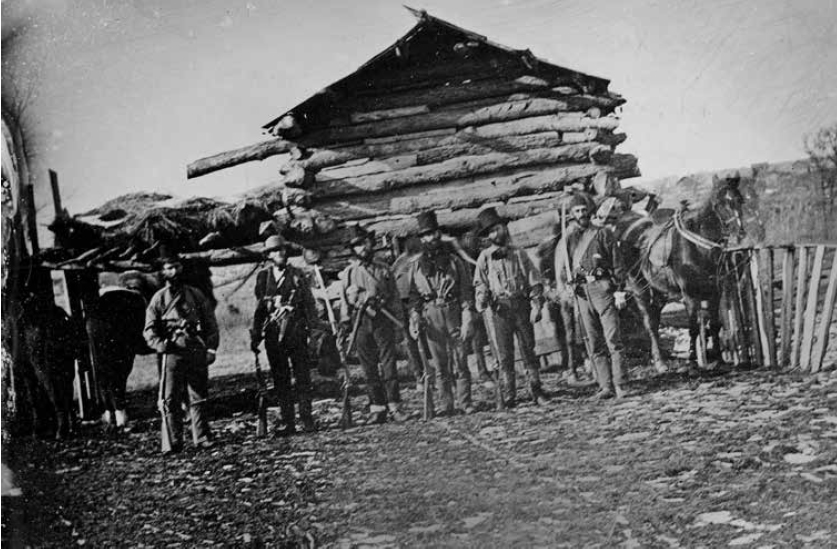Why did northern fear of the “Slave Power” intensify in the 1850s?
Printed Page 408

Figure false: Armed Settlers Near Lawrence, Kansas
Figure false: Armed with rifles, knives, swords, and pistols, these tough antislavery men gathered for a photograph near the free-soil town of Lawrence in 1856. Equally well-armed proslavery men attacked and briefly occupied Lawrence that same year. Kansas State Historical Society.
CHRONOLOGY
1856
- – “Bleeding Kansas.”
- – “Sack of Lawrence.”
1857
- – Dred Scott decision.
- – Congress rejects Lecompton constitution.
- – Panic of 1857.
1858
- – Lincoln-Douglas debates; Douglas wins Senate seat.
EVENTS IN KANSAS TERRITORY in the mid-1850s underscored the Republicans’ contention that the slaveholding South presented a profound threat to “free soil, free labor, and free men.” Kansas reeled with violence that Republicans argued was southern in origin. Republicans also pointed to the brutal beating by a Southerner of a respected northern senator on the floor of Congress. Even the Supreme Court, in the Republicans’ view, reflected the South’s drive toward minority rule and tyranny. Then, in 1858, the issues dividing North and South received an extraordinary hearing in a senatorial contest in Illinois, when the nation’s foremost Democrat debated a resourceful Republican.